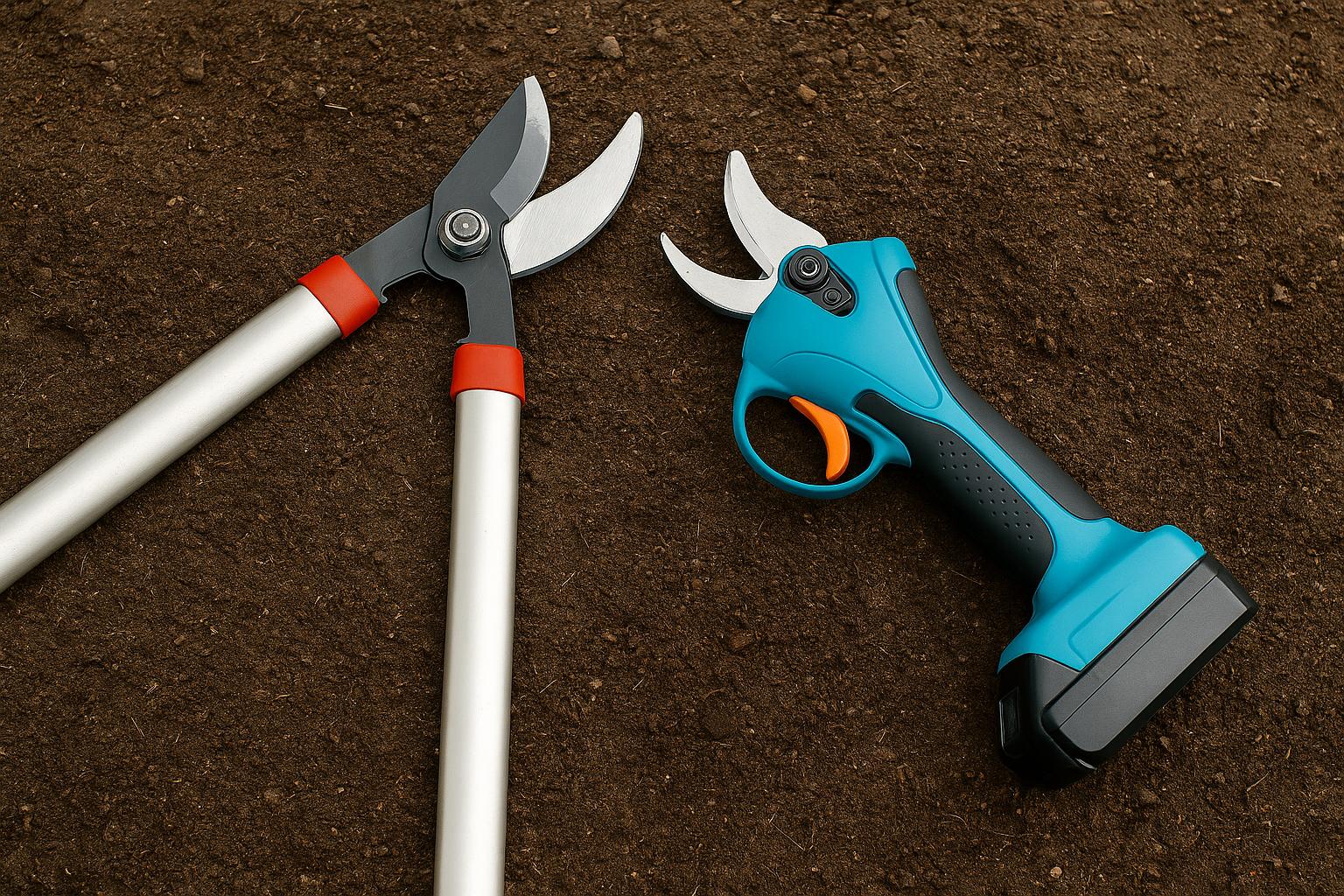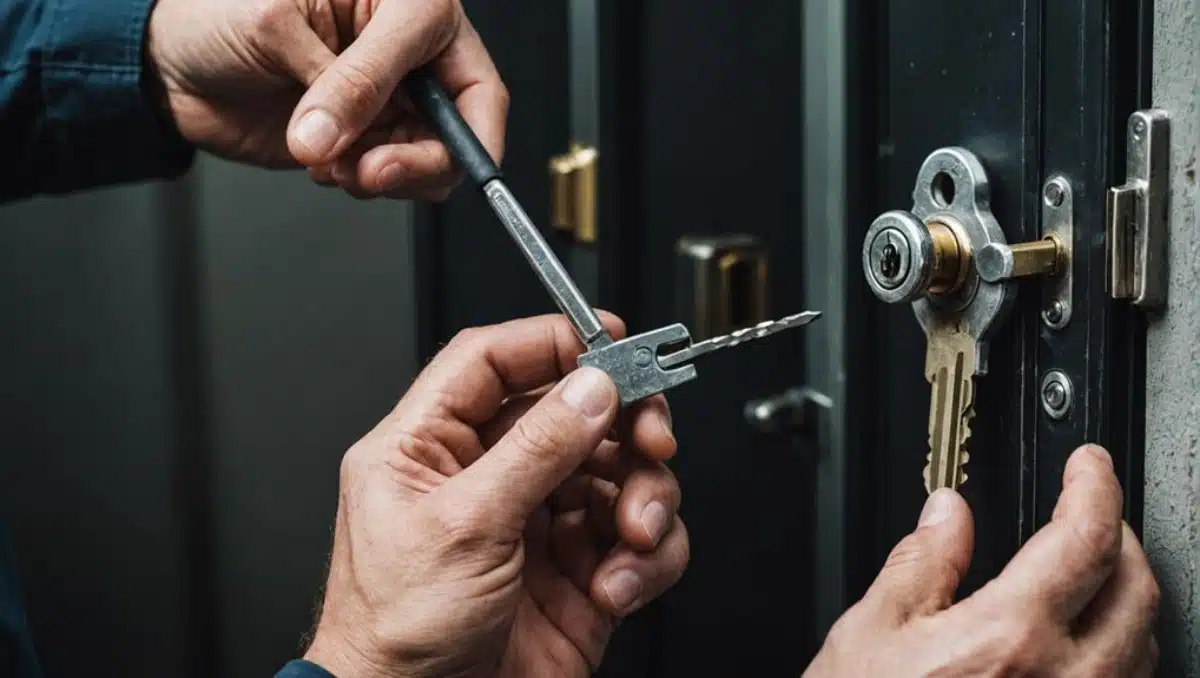Bypass loppers might seem like basic garden tools, but anyone who’s used a dull pair knows there’s a real difference between cutting and crushing. A clean cut isn’t just about appearances—it protects your plants from disease, encourages healthy regrowth, and makes the job easier on your hands. So, what’s the secret to getting the cleanest, smoothest cuts every time with bypass loppers?
It turns out, there’s no single magic trick. It’s a mix of tool quality, technique, maintenance, and even timing. Whether you’re pruning fruit trees, shaping shrubs, or thinning out unruly branches, using bypass loppers the right way can transform your garden results—and your experience.
What Sets Bypass Loppers Apart?
First, it is helpful to know what the purpose of bypass loppers is. Bypass loppers employ two sharp blades that glide past one another like scissors, in contrast to anvil loppers, which crush branches between a blade and a flat edge. Because of this, they are ideal for cutting live wood without getting bruised or torn.
The curved, sharp blades are made to be precise. When applied correctly, they leave the branch with a smooth surface, which is essential for both disease prevention and healing. The speed of recuperation increases with the cleanliness of the wound.
Bypass loppers are ideal for:
- Pruning live shrubs, vines, and fruit trees
- Cutting branches up to 1.5 to 2 inches thick
- Making angled, strategic cuts that support plant structure
But bypass loppers only work as intended when you use them right—and keep them in top shape.
Blade Sharpness: Your First Line of Defense
One of the most common reasons gardeners get ragged, messy cuts is dull blades. Dull blades force you to apply more pressure, which often results in crushed stems or half-severed branches that tear before they detach. That’s a recipe for infections and decay.
Sharpening your blades regularly isn’t just maintenance—it’s essential for performance. Most bypass loppers can be sharpened with a simple flat file or diamond hone. Follow the factory bevel and file in one direction, not back and forth. After sharpening, wipe the blade with an oily rag to prevent rust.
If you find yourself struggling to cut through a branch you’ve cut easily before, it’s likely time to sharpen—or replace—the blade. A clean blade glides through green wood with almost no resistance.
In choosing tools that hold an edge longer, material matters too. High-carbon steel blades, for example, are both durable and easier to resharpen. If you’re investing in quality tools for long-term use, it’s smart to Buy the Best Loppers early on rather than settle for bargain models that require more effort and break down quickly.
Tension Matters More Than You Think
The little nut that keeps the blades together is called a tension bolt, and it is often overlooked. The blades won’t contact cleanly if it’s too loose. The blades will grind or seize up if it is too tight. You’re not getting the best cut in either case.
Before using your loppers, make sure they are in good condition by opening and closing them several times. There should be no wobbling or scraping during the movement. If necessary, use the bolt in the middle to change the tension. The majority of high-quality versions are made to be easily tension-tuned by hand or using a wrench.
Aligning the blades correctly is also crucial. The outcome may be more of a rip than a cut if one blade moves even slightly out of alignment.
Clean Cuts Start with Clean Blades
Plant debris, sap, and resin can quickly clog the blade’s surface, decreasing its sharpness and increasing friction. Additionally, when trimming out diseased foliage or working on fruit trees, dirty blades can spread illnesses from one plant to another.
Clean your loppers with soapy water or a disinfectant solution after every use. Alcohol can also be rubbed. A small amount of mineral oil can help break down the stickiness of plants that contain a lot of resin, such as pine or cedar.
When trimming, some gardeners keep an alcohol-soaked cloth close at hand to clean the blades in between plants. It can stop problems like black spot or fire blight from spreading and just takes a few seconds.
“A good gardener never blames the plant when the cut goes wrong. The blade tells the story, every time.”
Know Where (and How) to Cut
To attain a clean result, technique is crucial. The most frequent error? Leaving an unsightly stub or cutting too close to the main stem. Always cut slightly above the branch collar, which is the swelling area where the branch joins the trunk or larger limb, for trees and woody plants. Cells in this region aid in wound sealing.
Angle the blades so that the moving blade is on the side of the branch you intend to keep when cutting a smaller branch. This guarantees that the portion of the plant that will continue to grow receives the cleanest cut.
Also, consider using the full length of the blade, not just the tip. The base of the blade is more powerful and stable, which results in smoother cuts.
Leverage Your Strength
Because bypass loppers are all about leverage, make good use of them. When working with thicker branches, place your hands close to the ends of the handles. You can exert less effort and get more torque as a result.
Although telescoping loppers provide greater leverage and reach, they can also weigh more. Choose the length based on your strength and the size of your plants. A 24–28 inch model is sometimes the ideal size for fruit trees and plants.
Steer clear of twisting the handles when cutting, particularly if the branch is stubborn. Twisting may cause damage to the limb you’re trimming or even bend the blade. Always go directly at the cut and squeeze in a single, fluid stroke.
Timing Is Everything
Cleaner cuts are easier and safer for your plants when you prune at the appropriate time of year. During dormancy, which is often in late winter or early spring, the majority of live pruning should be completed. There is less sap flow to clog your blades and the wood is harder.
Avoid pruning in damp weather. Because wet branches are slippery, there is a greater likelihood of uneven cuts or misaligned blades. Additionally, wet conditions increase the chance that fungus will infect newly cut areas.
What Makes a Clean Cut “Clean”?
A cut that is genuinely clean is angled, smooth, and devoid of any rips or bruises. It promotes healthy regrowth, fights infection, and heals rapidly. Proper technique, good tension, and sharp blades are used to make these cuts.
Additionally, you’ll realize that your own weariness is lessened by cleaner cuts. Your forearms, shoulders, and wrists experience less strain when the blade passes through with no resistance. This eventually results in less pain and increased stamina in the garden.
Not All Bypass Loppers Are Equal
Some loppers are built for show, not performance. Watch out for gimmicky features that look great online but underperform in the garden. Instead, focus on:
- Blade material (look for hardened or high-carbon steel)
- Handle construction (aluminum for lightweight, fiberglass for durability)
- Grip comfort (non-slip and shock-absorbing grips are worth it)
Think about spending money on models that have been evaluated by experts or seasoned gardeners. Particularly for high-volume pruning activities, websites such as The Spruce offer practical testing and analysis of what works and what doesn’t.
Fine Gardening, which offers helpful advice from horticulturists on how to enhance pruning practices and tool choices all year long, is another helpful resource.
FAQs
- How often should I sharpen my bypass loppers?
It depends on how often you use them. For frequent pruning, every 4–6 weeks is a good rule. Light users can sharpen every few months. - Can bypass loppers cut dead wood?
They can, but anvil loppers are usually better for that task. Bypass loppers can struggle with dense, dry wood and may dull faster. - Are bypass loppers good for fruit trees?
Yes. Their clean-cutting action makes them perfect for live growth on fruit trees, helping reduce disease and promote healthy buds. - What’s the difference between bypass and anvil loppers?
Bypass uses two curved blades that slice past each other, ideal for green wood. Anvil uses one straight blade and a flat surface—better for dead or dry branches. - Why do my loppers leave ragged cuts?
Likely due to dull blades, poor tension, or cutting too large of a branch. Always match tool size to the job and check blade condition regularly.
Cut Smarter, Not Harder
It takes strategy, not power, to get cleaner cuts with bypass loppers. It all comes down to timing, careful technique, proper tension, and sharp blades. Your plants respond to intentional pruning each time with improved overall shape, greater growth, and fewer issues.
The actual prize? A garden with more light, ventilation, and vitality that works better as well as looks better. And you won’t again struggle with subpar equipment or careless technique again after you’ve experienced the difference a flawless cut makes.
Season after season, your plants will appreciate your efforts in the form of lush growth and fewer issues if you keep your loppers available and your cuts tidy.
Check out more: Feeding Fodder vs. Dry Feed: What’s Better for Your Herd?



